When we say that a film is Japanese, what do we mean?
First of all, and most fundamentally, we mean that it is made by Japanese artisans in Japan. In that sense of course all of Miyazaki’s films are Japanese. But a number of them don’t appear to be Japanese. Castle in the Sky, Kiki’s Delivery Service, Porco Rosso, and Howl’s Moving Castle are all set in Europe and have European characters. The language, of course, is Japanese, but not in an English or French dub.
Then we have films like My Neighbor Tototoro, Princess Mononoke, Spirited Away, and Ponyo, which are set in Japan and have visibly Japanese characters. The first three also draw on Japanese folklore and religion, and perhaps the last as well, though the story was inspired by a European fairy tale, “The Little Mermaid”. If you walk in on a showing of any of these films you’ll know it is Japanese regardless of the language on the sound track.
And then we have The Wind Rises, which is Japanese in those first two senses. But it is Japanese in a third sense, one that’s a bit tricky to characterize. What makes it Japanese in this third sense is that it is problematically entangled with Japanese imperialist aggression in the 20th century. This is what critic Inkoo Kang had in mind when she said it “is a film whose meaning and power vary so greatly in different cultural and geographical contexts that Miyazaki should have fought for it to never leave his homeland” [1]. But “culture” is not the right word, for it’s not culture that makes the film problematic. It is the institution of the nation-state and the identifications entailed by it that make the film problematic.
Here I’m making a distinction between culture and society which is often elided. By society we mean a group of people; by culture we mean a whole range of beliefs, practices, and attitudes taken by people. But Japanese cultural practices exist all over the world, not just in Japan. It is not just that many societies have enclaves of Japanese emigrants who still speak Japanese and may live in Japanese ways, but that non-Japanese have adopted Japanese cultural practices as well, maybe not completely, not “through and through”, but to some extent. Nor is everyone who lives in Japan ethnically and culturally Japanese. Furthermore there are lots of cultural practices in Japan that aren’t Japanese. Are the chemistry and physics that are taught in Japanese schools and practiced in Japanese research institutes and companies, are they Japanese in any deep sense? What about baseball? Japanese have grown up playing baseball for well over a century and many think of it as a Japanese game. Is it, or isn’t it?
Which Japanese State?
The distinction between culture and society is a tricky one in practice, but then The Wind Rises is a tricky film. There’s nothing problematic about the fact that most of the characters are Japanese, or that most of the film is physically set in Japan. What makes the film problematic is its relation to the Japanese nation-state and through that to the international system of nation-states. The film paints a sympathetic portrait of a Japanese engineer, Jiro Horikoshi, who designed warplanes that were used by Japan in waging war in East Asia and in the Pacific. Japan lost the war in the Pacific to the United States (and its allies) and in consequence its governing institutions – those of the Empire of Japan (大日本帝國 Dai Nippon Teikoku) – were replaced by new ones imposed upon Japan in the constitution of 1947. Moreover Japan was physically occupied and ruled by the Allies from 1945 to 1954. If you will, the Japanese nation is still the one that had emerged in the Meiji Restoration of 1868 [2] but the state is new.
Sorting this out is tricky. Miyazaki’s parents were born and reached adulthood under the imperial regime. While Miyazaki was born under that regime in 1941, he was so young that that would have had little direct effect on his sense of identity [3]. For all practical purposes Miyazaki himself is a citizen of the new regime, but this film is about his parent’s world and the state in which they lived the first part of their lives. What’s the relationship he proposes between these two regimes? Crudely put, Miyazaki admires the technology embodied in the A6M Zero, Horikoshi’s best-known design, but abhors the use to which that magnificent plane was put.
* * * * *
The Wind Rises summons a network of identifications that aren't implicated in any of Miyazaki’s other films. If you are Japanese, what do you think about the Empire and its wars? That question will have one valence if you are old enough to have come of age during the Empire, but a different valence if, like Miyazaki (and most living Japanese [4]), you are too young to ever have identified with the imperial regime. If you are not Japanese, your encounter with the film is likely to be colored by your nation’s relation to imperial Japan. Inkoo Kang reacted strongly against the film [1]. A reviewer writing as Illogical Volume took a more moderate stance [5]:
This is not a particularly likeable movie, and its politely spoken, clever, and ambitious subject is not rendered particularly likeable in this telling either. If you’re anything like me you would probably have felt more at ease watching a movie that paid a little bit more lip service to its main character’s complicity in violence. One that spent more time not just acknowledging but discussing his flaws and suggesting alternatives.If you’re anything like me you’ll also be aware that all of this would leave the movie fundamentally unchanged. Everything that would have drawn me to that version of the movie exists in this one; its greatest strength is that it does not make this easy to live with.
We have to assume that this problematic character is something that Miyazaki intended, something of which he was fully aware. After all, he could have told a completely fictionalized story about an engineer who worked on the “good” side of a war. Or even about an engineer who didn’t work on war planes at all. Or about a composer, an artist, or even an animator working in a commercial marketplace for a wide popular audience. But that’s not the film Miyazaki made.
He made this one.
The Magic Mountain
This scene takes place a little over halfway through the film. Horikoshi’s first airplane design was a failure and the company has sent him to a mountain resort so he can clear his mind and rest his spirit. He’s just become reacquainted with Naoko Satomi, the young woman he’d helped in the Great Kanto Earthquake. It is evening and he’s approached by a German who’s also at the resort. The German, named Castorp, takes a drag on his cigarette.
01:15:16
Castorp: “German tobacco, I’ve been saving it. Last one.”
Horikoshi: “I understand. Japanese cigarettes always taste like home to me.”
C: “You have visited Germany, yes? Perhaps to Dessau.”
H: “You must be Sherlock Homes.”
C: “You read magazines, German magazines about airplanes. All Japanese engineers visit Dessau. It’s elementary, my dear Watson.”
They laugh.
01:15:27
H: “You’ve cracked the case.”
C: “Dr. Junkers is in trouble.”
H: “In trouble?”
C: “He fights the hand that feeds him. And he will lose.”
H: “He fights Mr. Hitler’s government?”
C: “The Nazi’s are a gang of hoodlums. … This is quite a good place. No mosquitoes, not too hot, good watercress. A good place to forget bad things. Isn’t that right?” [As he puts his cigarette out.]
01:14:49
H: “Cigarette? I’m afraid they’re Japanese.”
C: “Thank you. … It is a nice night. Here ist der Zauberberg.”
H: “The Magic Mountain. Thomas Mann.”
01:15:55
C: “Yes. A good place for forgetting. Make a war in China? Forget it! Make a puppet state in Manchuria? Forget it! Quit the League of Nations, forget it. Make the world your enemy. forget it. Japan will blow up. Germany will blow up too.”
01:16:15
H: “Do you think Germany will go to war again?”
C: “Yes, they must be stopped.”
That ends the conversation. Mr. Satomi comes over to the table to inform Horikoshi that Naoko has a fever and won’t be able to join him for dinner.
01:16:33
There are a number of things about this scene that merit comment. There is its position in the narrative, after Horikoshi has become reacquainted with Naoko, but before their courtship with paper airplanes. The cigarettes – they’re both smoking, the smoke in the air, the linkage between home and cigarettes. And there’s reference to Thomas Mann, both in the conversation between the two men, and in Miyazaki’s staging – one of the characters is named after a character from Mann’s novel, this scene is staged at a mountain resort (not a sanatorium, though we’ll soon learn that Naoko has tuberculosis), and the POV at the point where the men mention Mann, we’re below looking up at them.
But let’s note particularly that the references to Mann link these people and this film to an international or transnational network of arts and letters. The reference to Sherlock Holmes serves the same purpose. These are educated men living in an international milieu. These men are also citizens of two nations that will become allied in the Tripartite Pact of 1940 (along with Italy). More particularly Castorp informs Horikoshi that the German engineer he’d just visited, Hugo Junkers, is in trouble for opposing the Nazis. And then, just after he’s accepted a cigarette from Horikoshi, and after mentioning The Magic Mountain, Castorp reels off a list of imperial Japan’s aggressions. He makes it clear that he opposes the Nazi regime.
But before Horikoshi can respond – though is there any doubt about what he’s thinking? – they are interrupted by Mr. Satomi, who informs Horikoshi that Naoko has taken ill. Later that evening Castorp will sit down at the piano and play while everyone dances and then joins him in song. As far as I can tell, some of these people are Japanese and some are European.
01:22:33
This is a transnational milieu and it is, as Castorp said, a good place for forgetting. It’s not quite outside of space and time, but it’s at the fringes of the global system of nation-states. It is, for a moment, but only a moment, a safe place.
Where is art? Where is The Wind Rises?
Some Reference Points
Let me conclude by indicating a few parameters of some discussions that would be worth having in this context. But I’m not actually going to engage in any of them.
Let us, for example, consider the case of a real engineer of the highest caliber, Werner von Braun. I first learned about him when I was a child watching Walt Disney’s Wonderful World of Color. Disney had a number of programs about space exploration and one of them, “Man in Space”, featured Werner von Braun among others. Von Braun became one of my heroes.
Von Braun was very important in America’s space program, and was honored for his work [8]. But, as his name suggests, he was German and had headed Germany’s rocket program before and during the Second World War, a program that used war prisoners as slaves. He was also a member of the Nazi Party and of the Allgemeine SS. When he surrendered to the Americans they were glad to accept his surrender. US officials “bleached” his record and he was cleared to assume an important role in American rocket research.
If Horikoshi had acted in a similar way, how would he have been received?
* * * * *
There are a number of films that raise these kinds of issues, by which I mean issues of national identification in audience members. There’s a 1981 German film, Das Boot, which I’ve not seen [9]:
Das Boot is an adaptation of the 1973 German novel of the same name by Lothar-Günther Buchheim. Set during World War II, the film tells the fictional story of U-96 and its crew. It depicts both the excitement of battle and the tedium of the fruitless hunt, and shows the men serving aboard U-boats as ordinary individuals with a desire to do their best for their comrades and their country. The screenplay used an amalgamation of exploits from the real U-96, a Type VIIC-class U-boat.
U-96 torpedoes a number of allied ships in the film and is itself destroyed at the ended. The film was well received, not only in Germany, but in America as well. Why? After all, from an American point of view, this was about the enemy. How many Americans were driving German cars by that time? My father bought a Volkswagen in the early 1960s – a tricky business as the company he worked for, the mining division of Bethlehem Steel, did not approve of foreign steel in their parking lots.
Then we have Clint Eastwood’s 2006 Letters from Iwo Jima, which I have seen [10]:
Letters from Iwo Jima (硫黄島からの手紙 Iōjima Kara no Tegami?) is a 2006 Japanese-American war film directed and co-produced by Clint Eastwood, starring Ken Watanabe and Kazunari Ninomiya. The film portrays the Battle of Iwo Jima from the perspective of the Japanese soldiers and is a companion piece to Eastwood's Flags of Our Fathers, which depicts the same battle from the American viewpoint; the two films were shot back to back. Letters from Iwo Jima is almost entirely in Japanese, although it was produced by American companies Warner Bros. Pictures, DreamWorks Pictures, Malpaso Productions, and Amblin Entertainment.
Why would All-American Clint “Dirty Harry” Eastwood make a film about a Japanese military unit from the Japanese point of view, and in Japanese? The film was a critical success in America and it was a commercial success in Japan.
What about Terrence Malick’s 1998 The Thin Red Line? The Wikipedia summary doesn’t capture the point I’m after, but it tells you what the film is about:
The Thin Red Line is a 1998 American ensemble epic war film written and directed by Terrence Malick. Based on the novel by James Jones, it tells a fictionalized version of the Battle of Mount Austen, which was part of the Guadalcanal Campaign in the Pacific Theater of World War II. It portrays soldiers of C Company, 1st Battalion, 27th Infantry Regiment, 25th Infantry Division... Although the title may seem to reference a line from Rudyard Kipling's poem "Tommy", from Barrack-Room Ballads, in which he calls foot soldiers "the thin red line of heroes", referring to the stand of the 93rd Regiment in the Battle of Balaclava of the Crimean War, it is in reality a quote from James Jones' book which reads "they discover the thin red line that divides the sane from the mad... and the living from the dead..."
The film opens with a lingering shot of a crocodile slipping into the water, is filled with natural sounds, and has many shots of wildlife on Guadalcanal, as well as scenes with the natives of the island. Such segments are fairly prominent in the film. Even as part of the island is consumed by battle between Americans and Japanese there’s life on the island that’s indifferent to that violence. Life goes on. As I assert in my blog post about the film [12], it’s not about us. It, the universe, isn’t about us.
Francis Ford Coppola’s Apocalypse Now (1979) is another film I’ve written about, quite a bit [13]. While it would be easy to read it as an anti-war film, I hesitate to do so, and it certainly can’t be read as pro-war. Rather, it presents an ugly a complex situation that was, arguably, at the heart of the war in Vietnam and also at the periphery of the state. That’s why I’ve included it in this round up.
The central character, Capt. Willard, is on one of those secret missions that doesn’t exist; he’s to assassinate a Special Forces colonel who’s gone rogue. And he does it, not in Vietnam, but in Cambodia, where America and its forces have no official existence. This rogue colonel has set himself up as the semi-divine head of a band of Montagnard troops. When Willard assassinates him, he then, in effect becomes the new semi-divine leader. Except that he doesn’t. He turns back and goes down river where he figure’s he’ll get a promotion. For successfully completing a mission didn’t exist. What does the nation-state have to do with any of this? Nothing, and everything.
Finally, there’s the film that came out in Japan in 1954 as Gojira and was followed in 1956 by an Americanized version under the title, Godzilla, King of the Monsters. The original Japanese film had two plots. There’s the plot that everyone knows, and that was preserved in the Americanized version; this is about an irradiated monster that surfaces in Tokyo Bay and destroys much of Tokyo before it is itself destroyed. The other plot is a romance plot centering on the conflict between arranged marriage and marriage by individual choice, which I explore in my working paper on the film [14].
That conflict was very meaningful in Japan, where arranged marriage was the norm until World War II and is still practiced today. But it would have been all but meaningless in America. So the American producers cut most of that footage from the film.
They did something else. They shot 20 minutes or so of new footage. This footage was about an American reporter who just happened to be in Tokyo at the time Godzilla surfaced. The Americanized film is told from the point of view of this reporter, who also provides voice over at various times during the film.
So, we start with a Japanese film for a Japanese audience. One of the themes, the danger of atomic radiation, would have particular meaning for that Japanese audience. The footage of the devastation that Gojira caused in Tokyo might just as well been footage of Hiroshima or Nagasaki. This film was then re-ordered with new footage shot from an explicitly American point of view, and shown in America, where it did quite well – I saw it at that time and it scared the stuffing out of me. And thus we have the beginnings of the longest running franchise in film history.
But Miyazaki, though he made a distinctly Japanese film, didn’t have to recut it for an American audience. How will The Wind Rises play a half-century from now?
References
[1] Inkoo Kang. “The Trouble with The Wind Rises.” The Village Voice. December 11, 2013. URL: http://www.villagevoice.com/film/the-trouble-with-the-wind-rises-6440390
[2] Christopher Goto-Jones. Modern Japan: A Very Short Introduction. Oxford UP, 2009.
[3] Hayao Miyazaki. Constitutional Amendment is Out of the Question. The Asia-Pacific Journal, Vol. 12, Issue 36, No. 1, September 8, 2014.URL: http://japanfocus.org/-Miyazaki-Hayao/4176/article.html
[4] Demographics of Japan. Wikipedia. Accessed 20 Nov. 2015. URL: https://en.wikipedia.org/wiki/Demographics_of_Japan
[5] Illogical Volume. “The Wind is Rising, We Must Try to Live” – Mindless Melancholy at the Movies. Mindless Ones. May 22, 2014. URL: http://mindlessones.com/2014/05/22/the-wind-is-rising-we-must-try-to-live/
[6] Tripartite Pact. Wikipedia. Accessed 20 Nov. 2015. URL: https://en.wikipedia.org/wiki/Tripartite_Pact
[7] Man in Space. Wikipedia. Accessed 20 Nov. 2015. URL: https://en.wikipedia.org/wiki/Man_in_Space
[8] Werner von Braun. Wikipedia. Accessed 20 Nov. 2015. URL:
[9] Das Boot. Wikipedia. Accessed 20 Nov. 2015. URL: https://en.wikipedia.org/wiki/Das_Boot
[10] Letters from Iwo Jima. Wikipedia. Accessed 20 Nov. 2015. URL: https://en.wikipedia.org/wiki/Letters_from_Iwo_Jima
[11] The Thin Red Line (1998 film). Wikipedia. Accessed 20 Nov. 2015. URL: https://en.wikipedia.org/wiki/The_Thin_Red_Line_(1998_film)
[12] Malick’s Thin Red Line. New Savanna. Accessed 20 Nov. 2015. URL: http://new-savanna.blogspot.com/2011/08/malicks-thin-red-line.html
[13] Apocalypse Now, Working Papers. 2011. Academia.edu. URL: https://www.academia.edu/8105343/Apocalypse_Now_Working_Papers
[14] The Gojira Papers. 2014. Academia.edu. URL: https://www.academia.edu/7905287/The_Gojira_Papers
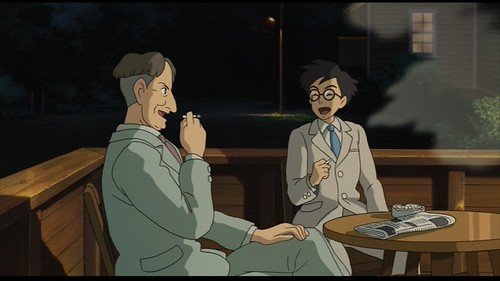
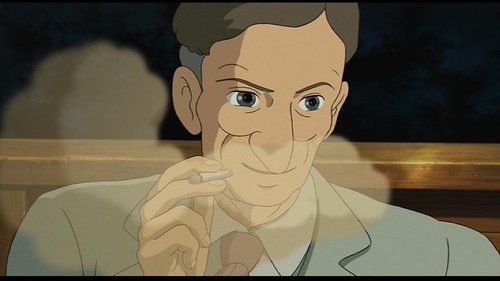
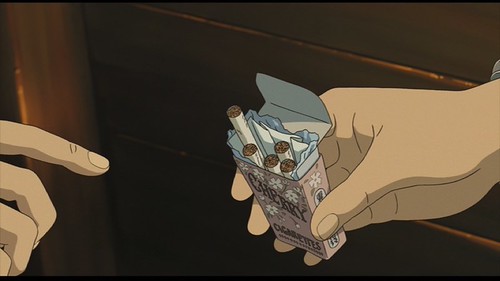
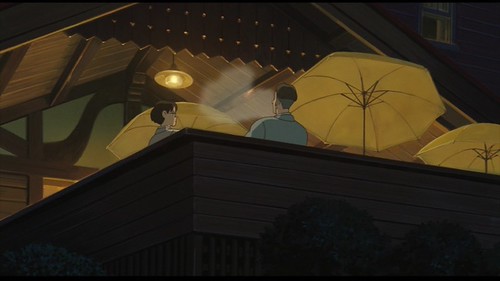
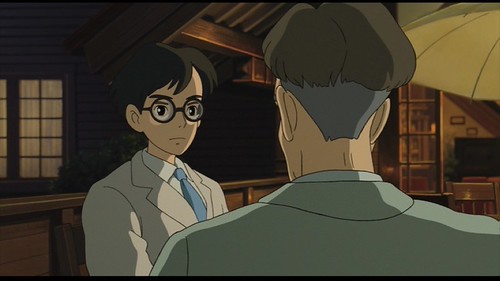
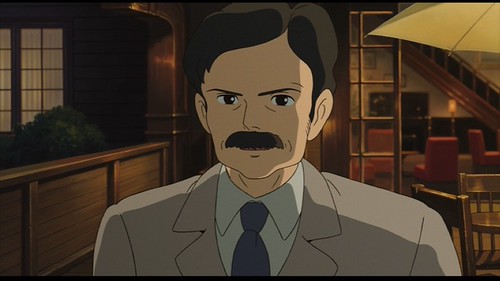
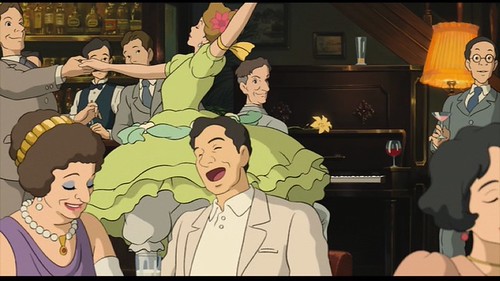
No comments:
Post a Comment